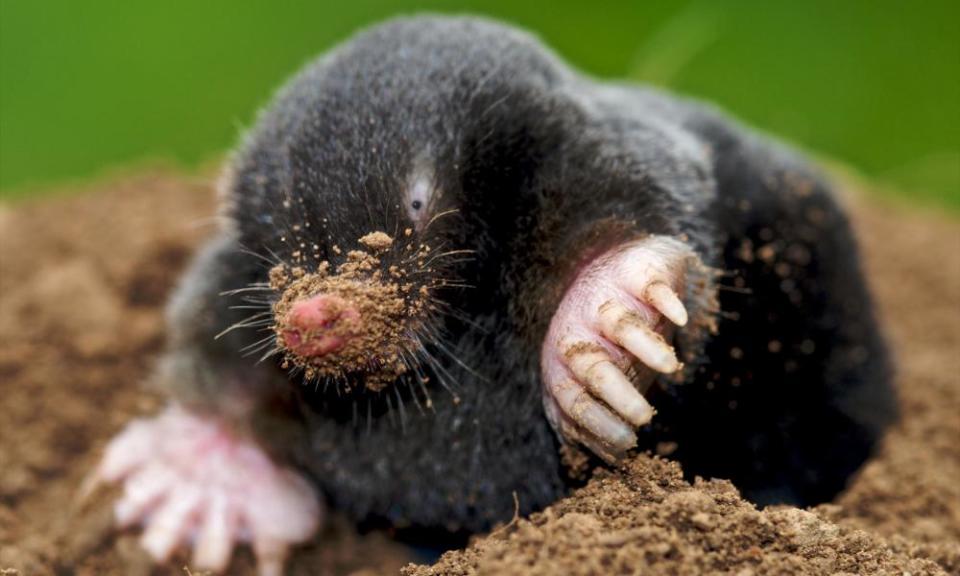Specieswatch: the secret lives of moles

The mole (Talpa europaea) advertises its presence by leaving lines of small hills as it excavates its way across grassy areas, often leading to its persecution. Moles used to be trapped for their velvety pelts but now, despite the fact they are good for draining soil and eating harmful insect larvae, they are killed mostly because they wreck golf greens and lawns.
Despite these attacks, moles seem remarkably resilient. They live in semi-permanent burrows, sometimes hundreds of metres long, at various depths to allow for droughts and, in the winter, low temperatures. They are powerful diggers with spade-like front legs, a pink pointed snout, tiny eyes and a short tail. They weigh 80g and need to eat 50g of worms a day to survive. To ensure a regular supply, they bite worms in the head to immobilise them, then store them in chambers, dozens at a time.
Adult moles are most at risk in spring when the males enlarge their territories, tunnelling through ever-larger areas in search of females. Nests lined with a ball of dry plant material are used for sleeping and raising litters of three to four. At a month old the young disperse above ground to find their own homes, their time of greatest danger.

 Yahoo Movies
Yahoo Movies 